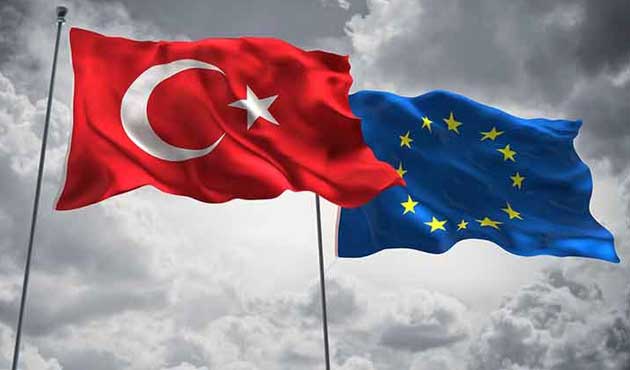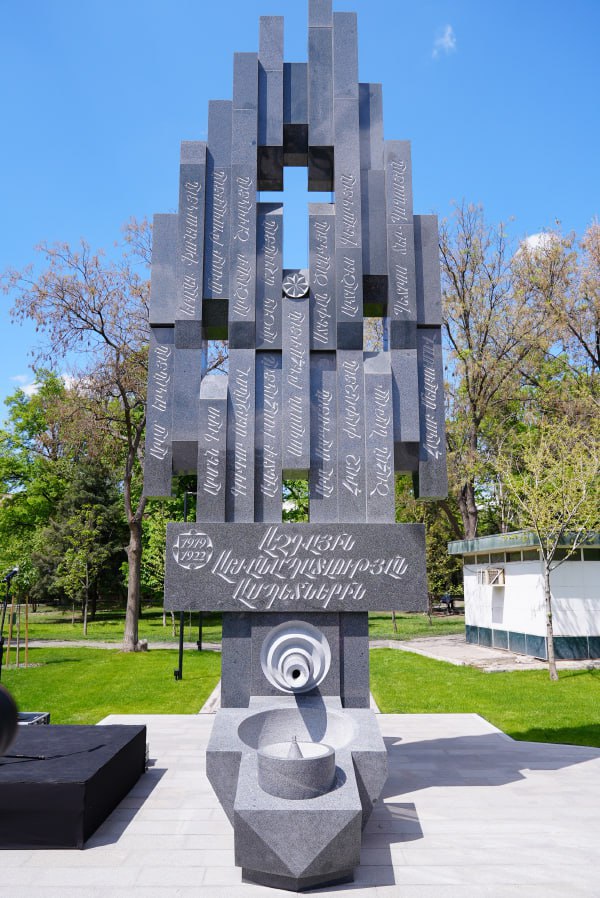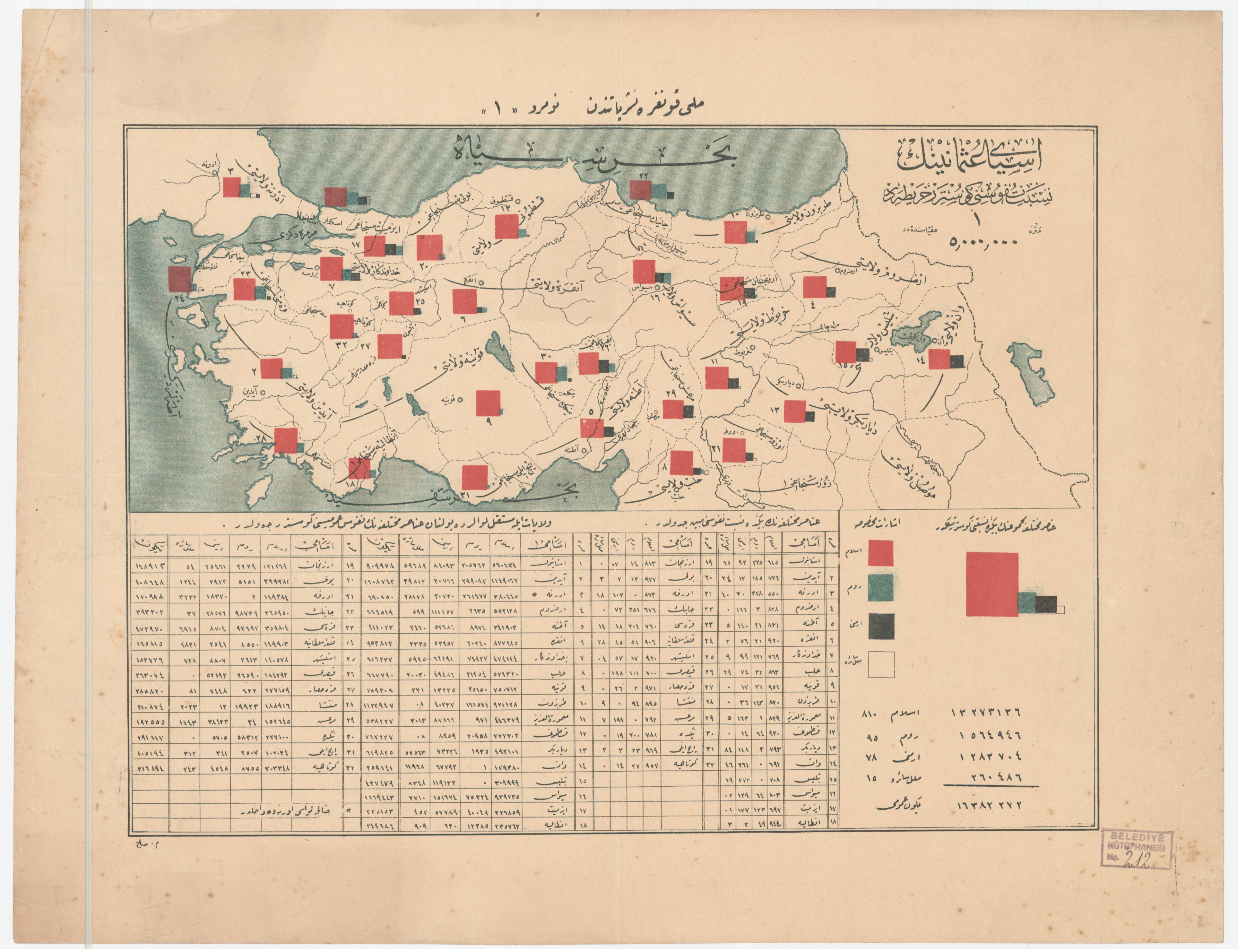Chapter 6: World War I
McCarthy tries to give an overall picture of the most critical phases of Ottoman-Armenian relations in this very densely informative chapter. He concludes that the war was devastating for all people in Anatolia and states that “at the end of the war, the population of eastern Anatolia was far different than it had been for centuries… Armenians were gone… number of Muslims were greatly diminished”. The result of the World War I was a region that was left with ruins, disease, and devastation.
McCarthy begins his narration by explaining the events that led to this ruin. He argues that the reemergence of the Armenian rebellion in eastern Anatolia, their joining of forces with the Russians, and coordinated assistance for the Russian advance in Eastern Anatolia proved successful as the Armenians and Russians occupied Van. Armenians provided intelligence, struck a blow to communications between Ottoman army outposts, raided civilian posts to divert attention of the Ottoman security forces behind the front lines and therefore successfully forced the Ottoman army to detach one third of its forces to fight the Armenians in and around Van. Armenians proved very helpful for the Ottoman defeat and tried make the occupation even easier for the Russians when they began the occupation of Van in advance of the anticipated Russian occupation.
As McCarthy delicately highlights, the Armenian rebellion became uncontrollable when the Russians realized they were taking action not only against the Ottoman forces in the region but rather acted against the Muslim civilian population. Russians were later defeated and during their retreat they abandoned the Armenians in Van, determined not to seek Armenian support again in the future.
McCarthy argues that the main effect of the rebellion in Anatolia was to create chaos in the interior and draw away soldiers who should have been fighting the Russians. Ottoman government realized that the Armenian rebellion was a critical factor and their success was a direct result of local support, either voluntary or involuntary. Thus McCarthy later describes some of the prominent rebellions by the Armenians that occurred in 1915 that reflects the level of the threat to internal security of Anatolia; in Sasun-Muş-Bitlis (February 1915), Sivas-Karahisar (February 1915), Zeytun-Maraş (January 1915), Urfa (August 1915), Musadağı (August 1915). As a result, Ottoman government had to treat these rebellion as an extensive insurgency and therefore took measures to deal with this growing security threat during a time of war. Ottoman government lacked the adequate resources and manpower to come up with a gradual counterinsurgency policy, thus it necessitated a more radical approach, namely what McCarthy calls the “forced migration” of the Armenian population from the provinces in active, large-scale rebellion and/or occupied previously by the Russians. McCarthy recommends the use term “forced migration”, but he continues to use the terms “relocation” and “transfer” interchangeably and frequently during the chapter.
McCarthy argues that the forced migration process did not include all the Armenians. Accordingly most Armenians in western Anatolia and Ottoman Europe, who were not considered a danger, were excluded from the relocation order. All the orders and regulations regarding the process indicated to the fact that there was concern for the well-being of the relocated Armenians and in no way reflected a desire to cause death or directly kill Armenians. In fact, as McCarthy correctly points out, there were no documents, regulations, or orders that directly indicated an intention or will to destroy Armenians. All the evidence, with regard to the official policy of the state, proves the opposite. McCarthy admits that Armenians suffered greatly from the process, as did all the peoples in the empire who bore the effects of the war in Anatolia, but this was due to government inefficiency, lack of resources, and rapaciousness of Kurdish tribes, criminals, and even some avaricious Ottoman officials. McCarthy states that in theory the relocation process were to be orderly and well supervised, but the system could not cope with the process.
McCarthy tries to give some estimates with regard to the number of people who were relocated, which is only possible when someone makes use of the relocation statistics, what is known of the relocation process, and population records. Accordingly, McCarthy argues that slightly more than half of Armenians in territory controlled by the Ottomans were not relocated; most of them also either left before or during the war for Istanbul and other cities, or other countries such as Greece, US, Canada, France, Bulgaria, and Egypt.
One of the most important arguments McCarthy makes in this chapter with regard to the intention of the Ottoman government to keep the well-being of the Armenians who were relocated is that the Ottoman government openly supported and invited the American efforts to aid the Armenians in need. Ottoman government accepted missionary aid to Armenians that amounted to approximately 10 billion dollars today, which McCarthy correctly calls the greatest expenditure of non-governmental relief funds in history. He also points to the fact that at the same period, Muslim population in Anatolia was also suffering from diseases and starvation, but they could only make use of the limited government resources.
McCarthy uses this example to show that Ottoman attempts to protect the Armenians were deficient. But he also argues that the Ottoman government could not protect the Armenians from other threats besides starvation and disease. Ottomans were incapable of properly protecting either the Armenians or even its own troops from the attacks of the Kurdish tribes, bandits, looters etc. However, explaining the underlying reasons behind the attacks against the Armenians in the region, McCarthy claims that a good deal of the hatred and vengeance against the Armenians was an inevitable result of their earlier attacks and collaboration with the Russians, and their rebellion that cost the lives of the Muslim civilian population in the region. The existence of over 250,000 Muslim refugees who were forced out of Southern Caucasus and their sufferings at the hands of the Armenians under Russian command could probably be another factor. In the end, McCarthy states that there were unprincipled state officials who misbehaved against the Armenians, but Ottoman government recognized these crimes took place and responded with investigations that led to trials and even executions at the time. He correctly points out to the fact that neither the Russians nor the Armenians ever tried those who were guilty of crimes against Muslims.
McCarthy suggests that the Armenian killings and expulsion of the Muslims was not a result of pragmatic interest calculation. Armenians were destroying the region and cities together with the infrastructure and the settlements, the space that they were aiming to take under control. According to McCarthy, the only remaining explanation was the hatred felt against the Muslims, because the level of destruction made no sense. Even when in 1916 Russians invaded eastern Anatolia again, Armenians proved uncontrollable by continuing murders of Muslims, and therefore Russians began to court-martial the Armenians in the region prior to their retreat in 1917 revolution.
McCarthy shows that the atrocities by the Armenians continued after the Russian retreat to the South Caucasus. Anticipating Ottoman advance, Armenians fought the Muslims in the region, especially the Kurdish tribes, and when the Ottoman forces began to take control of the region the remaining Armenians fled, leaving devastation and committing mass killings on their way. Armenian executions of the Ottoman prisoners of war, who were kept under guard by the Russians were an example of the hatred McCarthy mentions throughout the chapter.
McCarthy analyzes the Armenian attempts to establish control over the lands in the south, mainly in Adana, by assisting the French occupation in the region and argues that in the end this attempt also failed due to Armenian atrocities against the Muslim population in the region, which resulted in a coordinated collaboration between the Turks and Kurds against the French and the Armenians. Armenians were abandoned by the French as a result, and most of those Armenians fled with the French.
McCarthy’s evaluation of the World War I is full of details despite the shortage of space. He successfully points out to several critical points that clearly shows how the Ottoman state fairly perceived a direct threat that had been gradually developing before and during the war. Despite the physical and social devastation of the threat McCarthy also shows how the Ottoman government displayed a delicate concern for the civilian lives, however deficient the implementation of the process, and showed good intentions by admitting to the fact that the administration of the precautions for the safety of the Ottoman state were inadequate and therefore any help to that end were welcome. He profoundly demonstrates how the Armenian rebellion and insurgency were abandoned by the foreign powers at the end of the war and even then how the Armenians played a devastating role for the region.

 EU'S INCORRIGIBLE BIAS AND ANTAGONISM AGAINST TURKEY HAS BEEN REVEALED
EU'S INCORRIGIBLE BIAS AND ANTAGONISM AGAINST TURKEY HAS BEEN REVEALED
 CHAPTER BY CHAPTER SYNOPSIS AND REVIEW OF TURKS AND ARMENIANS: NATIONALISM AND CONFLICT IN THE OTTOMAN EMPIRE BY JUSTIN MCCARTHY - 6
CHAPTER BY CHAPTER SYNOPSIS AND REVIEW OF TURKS AND ARMENIANS: NATIONALISM AND CONFLICT IN THE OTTOMAN EMPIRE BY JUSTIN MCCARTHY - 6
 NİKOL PASHİNYAN’S SPEECH IN THE WORLD WAR I ARMISTICE EVENT REVEALS HIS INTENTIONS REGARDING 1915 EVENTS
NİKOL PASHİNYAN’S SPEECH IN THE WORLD WAR I ARMISTICE EVENT REVEALS HIS INTENTIONS REGARDING 1915 EVENTS
 THE ROOTS OF “NEMESIS” AND THE BACKGROUND OF RADICAL ARMENIAN NATIONALIST TERRORISM
THE ROOTS OF “NEMESIS” AND THE BACKGROUND OF RADICAL ARMENIAN NATIONALIST TERRORISM
 STATISTICAL INFORMATION REGARDING OTTOMAN ARMENIANS AND FOREIGN RESOURCES
STATISTICAL INFORMATION REGARDING OTTOMAN ARMENIANS AND FOREIGN RESOURCES
 ITALIAN REACTION TO THE CAROLINGIAN EU PROJECT
ITALIAN REACTION TO THE CAROLINGIAN EU PROJECT
 THE COLLAPSE OF DASHNAK ARMENIA IN 1920 AND THE DEBACLE OF NIKOL PASHINYAN’S REGIME IN 2020
THE COLLAPSE OF DASHNAK ARMENIA IN 1920 AND THE DEBACLE OF NIKOL PASHINYAN’S REGIME IN 2020
 THE ROOTS OF “NEMESIS” AND THE BACKGROUND OF RADICAL ARMENIAN NATIONALIST TERRORISM
THE ROOTS OF “NEMESIS” AND THE BACKGROUND OF RADICAL ARMENIAN NATIONALIST TERRORISM
 THE BRIBERY SCANDAL IN THE EUROPEAN PARLIAMENT
THE BRIBERY SCANDAL IN THE EUROPEAN PARLIAMENT
 RELATIONS OF US SENATORS WITH FOREIGN LOBBIES: THE CASE OF MENENDEZ
RELATIONS OF US SENATORS WITH FOREIGN LOBBIES: THE CASE OF MENENDEZ




























